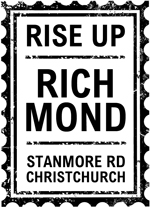The Story of Our River – He Kōrero Mō Te Awa
https://aureconspatial.maps.arcgis.com/apps/Cascade/index.html?appid=d1d81fc6951d468ab510d46bcad04554
As we plan the future, it’s worth reflecting on the role the Ōtākaro Avon River has played throughout the years.
Ōtākaro means ‘a place of play’. It was named after the Māori children who often played on the banks of the river during times of food gathering (mahinga kai).
“A river of water clearer than crystal.”
John Deans, a settler at Riccarton Bush, describing the Ōtākaro Avon River in 1844.
Mana Whenua – He Kōrero Tuku Iho
As a significant site of settlement and mahinga kai, the Ōtākaro Avon River is of immense cultural importance to Ngāi Tūāhuriri/Ngāi Tahu.
Ngāi Tahu – and Ngāti Māmoe and Waitaha before them – had many permanent and temporary settlement sites of kāinga and pā in the Ōtautahi (Christchurch) area. From these settlements, they gathered natural resources from the surrounding wetlands, rivers, hills, forests, estuaries and coastlines.
The entire landscape was filled with names and stories, which mapped the terrain and narrated its harvest.
Recreational Uses
Pleasure boating and gardens
– In the 19th and early 20th centuries the Ōtākaro Avon River was commonly used for recreation and pleasure boating. There were several privately-run pleasure gardens that offered a variety of attractions. The most famous of these was established by Professor Bickerton at Wainoni.
Bathing
– In 1877, a deep channel was dredged in the river at Cashel Street to create a public pool. However, the water quality was affected by polluted water from the public hospital and the pool never became popular.
Walking and cycling
– Walking and cycling along the banks of the river were popular leisure pursuits, with easy access from nearby roads.
Fishing
– From the 1860s trout were released into the river. Fishing became a popular pastime, but the trout population eventually dwindled due to a decline in their food source.
Rowing
– Early on, the river was used for rowing competitions and practice. In 1950 the river at Wainoni was diverted to straighten and form Kerrs Reach, to allow for competitive rowing. Rowing became a major sport and pastime, and is still popular today.
Urbanisation
In 1851 Christchurch was founded on the banks of the Ōtākaro Avon River, as it was a good water source and a handy transport route. After being initially named the Shakespeare River by the Canterbury Association, the Deans family called it the Avon and that name was ultimately adopted.
The role of the river changed over time. Its narrow, meandering shape and an increase in silt and weeds made navigation difficult. Over time, land transport became the preferred choice for moving people and goods between the city and sea.The role of the river changed over time. Its narrow, meandering shape and an increase in silt and weeds made navigation difficult. Over time, land transport became the preferred choice for moving people and goods between the city and sea.
Between 1850 and 1900, 144 people drowned in the river. A bylaw enabled bollards and chains to be built along the river’s edge to reduce the number of drownings.
In the 1920s Christchurch tailor, R.B Owen, founded the “River Improvement Fund”. He envisaged a boulevard from the city to New Brighton. While this never eventuated, he did plant 53 lime trees along the bank between Evelyn Cousins Avenue and Medway Street in Richmond. Many still grow there today.
Declining Water Quality
Sewage and stormwater
– By the 1860s, water quality was declining and under threat by a proposal to discharge the city’s wastewater into the river. In 1875, the Christchurch Drainage Board devised a plan to separate the city’s sewage and stormwater systems. While the plan ensured sewage was diverted for treatment, stormwater drained into the city’s rivers and streams. By the 1880s there had been a dramatic drop in deaths from waterborne diseases caused by sewage in waterways, but contaminants still entered the river through stormwater and industrial waste.
Weeds
– Another major challenge was the accumulation of weeds. In 1927, a hydraulic sweeper cleared the weeds along the river. While effective at clearing the riverbed, this also sent a great deal of silt down the river to the estuary.
Contamination
– Today, contamination from stormwater, wastewater overflow and other discharges, continue to contribute to poor water quality.
